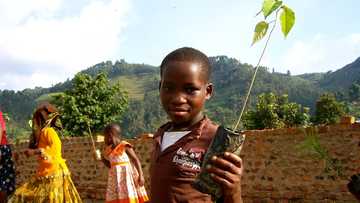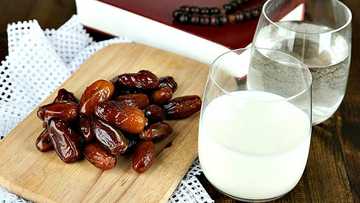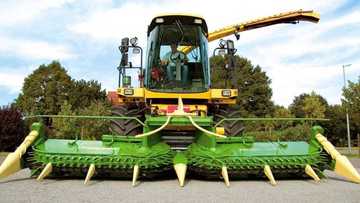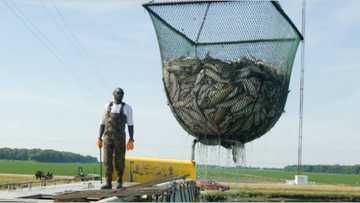Advantages and disadvantages of integrated farming system
Modern farmers minimize costs and maximize agricultural productivity and profits by implementing proper skills and techniques. Combining cattle breeding and crop production is one of the best ways of increasing harvest and profits. Discover the advantages and disadvantages of integrated farming below.
PAY ATTENTION: Click “See First” under the “Following” tab to see Legit.ng News on your Facebook News Feed!
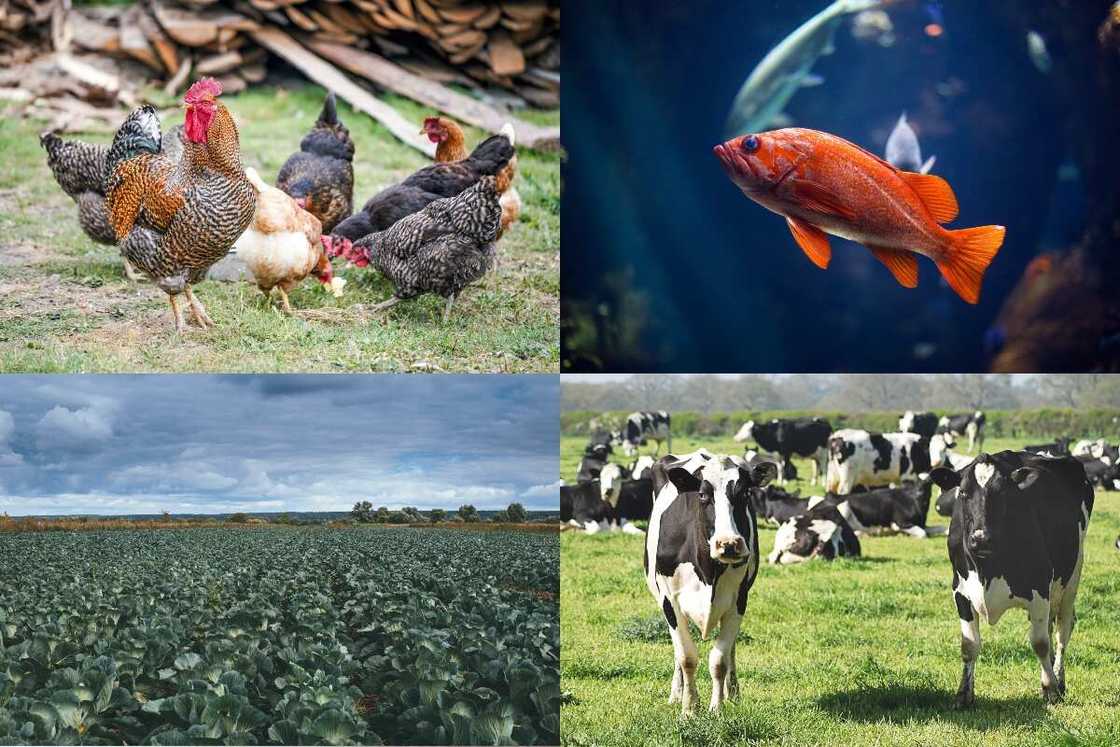
Source: UGC
An example of integrated farming is rearing fish with poultry or livestock. You can use the animal's excretion as fish food or manure for aquatic plants fish feed on. Poultry feed on weeds, insects, snails, and frogs in the pond, while livestock feed on pond weeds.
One can also keep snails and grow food crops and fruits. Snails feed on cocoyam, pawpaw, okra, cassava, eggplant, cabbage, lettuce, and banana leaves. Therefore, consider starting a snail farm if you usually plant these crops.
What is an integrated farming system?
An integrated farming system (IFS) involves mixing plant production and animal farming using modern tools/technologies and traditional practices. The primary aim is to increase the quantity and quality of organic food production while generating renewable biogas energy and organic manure simultaneously.
PAY ATTENTION: Follow us on Instagram - get the most important news directly in your favourite app!
Advantages and disadvantages of integrated farming system
IFS has opened up many agricultural development opportunities and diversified Nigeria's food and cash crop production sectors. This farming system is a promising foundation for more agricultural advancements, progressive technologies, and profits.
Advantages of integrated farming system
You should invest in this farming method if you have the resources. If you are short of capital, you can approach financial institutions extending farmers' loans. Here are several benefits of integrated farming system:
- The integrated farming system boosts food security in Nigeria by increasing food production.
- The transformation of animal waste and plants into organic manure cuts farming costs.
- An increase in cash crop production increases export revenue.
- Organic manure increase soil fertility.
- An increase in organic food production boosts people's health.
- Integrated farming minimizes soil and water pollution by reducing the usage of chemical fertilizers.
- Agroforestry boost soil fertility, protects water catchment areas from drying up, reduces soil erosion, and decreases air pollution.
- Biogas from plant and animal waste is renewable energy for cooking, lighting, and more.
- Using biogas reduces air pollution from petroleum and other oil fuel products.
- Integrated farming minimizes land waste since those with small pieces of land can use them more efficiently.
- Integrated farming develops all sectors of the farming industry simultaneously. People no longer concentrate on crops, animals, poultry, or fish because they now know how to mix them. Some are now doing snail farming and other new things.
- Large-scale farmers who use integrated farming create employment opportunities. Farmers in Nigeria have learned to seek professional guidance before embarking on integrated farming.
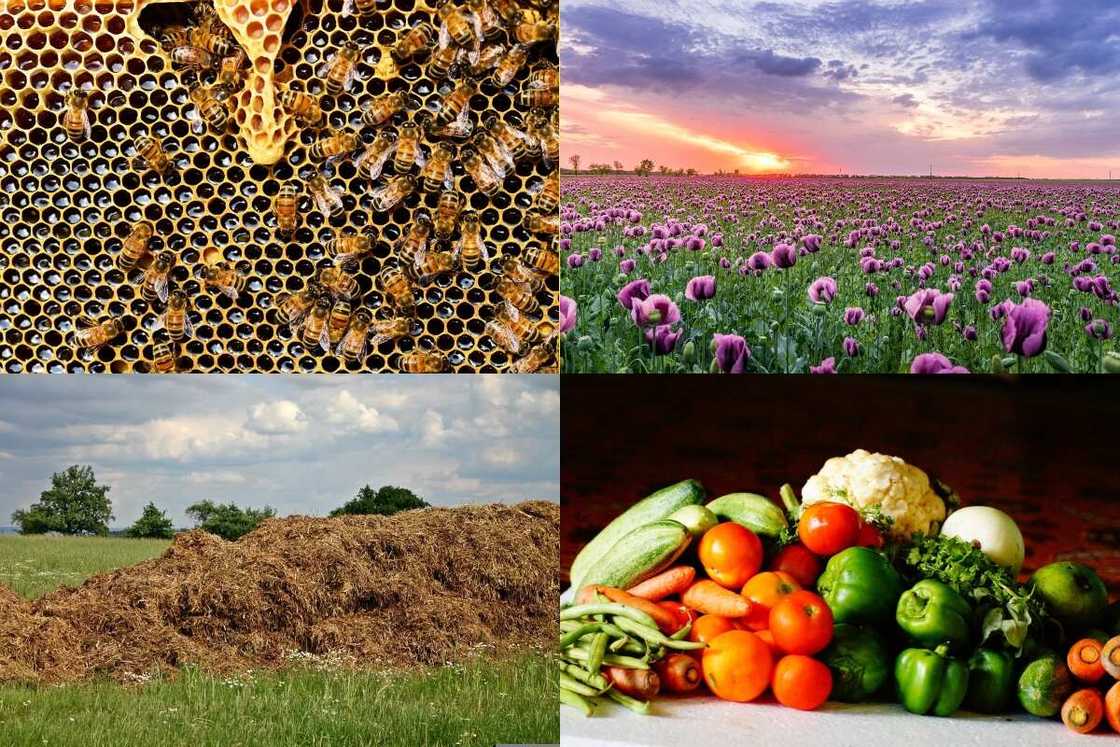
Source: UGC
Disadvantages of integrated farming system
The constraints of integrated farming should not discourage you because its advantages override the disadvantages. Focus on all the good things you and the community benefit from this type of farming and how to overcome its disadvantages. Here are some of the integrated farming system's disadvantages:
- Farmers have to rely on costly modern technologies in some farming activities. For instance, biogas production and snail farming require one to invest in new knowledge, resources, and machinery.
- Nigeria has few experts to advise farmers regarding snail farming, beekeeping, keeping farm records, and other new techniques. Therefore, most farmers are using try-and-error methods.
- Not all plants, animals, or poultry can be mixed. For instance, you cannot grow certain plants to use as feed for specific animals, poultry, or fish because they are harmful.
- Combining birds, pigs, and fish on one farm can cause an outbreak of diseases like influenza. Human beings can contract some of these diseases, and the mutilation of viruses creates deadly and incurable diseases.
- Beekeeping can be harmful to human beings, livestock, and poultry. A farmer is advised to keep harmless bee species and not let livestock and poultry near beehives if they are harmful bee species.
What are the components of integrated farming system?
You can combine any of the following activities when creating an integrated farming system:
Activity | Definition | Examples |
Cash-crop farming | Planting crops to sell within the country or to export at a profit. | Sesame, cocoa, rubber, groundnuts, soybeans, palm oil, tobacco, cotton, kolanut, ginger, etc. |
Horticulture
| Growing fruits, vegetables, herbs, flowers, aromatic, ornamental plants, etc. | Bananas, apples, guavas, onions, tomatoes, okra, pepper, carrot, hibiscus, roses, aloe vera, lilies, etc. |
Subsistence farming | Growing edible plants, especially on a small scale, for home use. | Cassava, yam, cocoyam, maize, sorghum, millet, cowpea, groundnuts, etc. |
Poultry farming | Raising birds domestically or commercially for meat, eggs, and feathers. | Chicken, turkeys, guinea fowl, geese, ducks, quails, pigeons, ostriches, etc. |
Livestock farming or animal husbandry | Keeping domestic animals for meat, fibre, milk, and other products. | Goats, sheep, cattle, pigs, rabbits, donkeys, camels, horses, etc. |
Agroforestry | Growing trees or shrubs around or among crops or pastureland. | Azadirachta, albizia, dalbergia, acacia, tamarindus, eucalyptus, khaya, leucaena, etc. |
Aquaculture | Rearing fish and other aquatic organisms. | Crayfish, catfish, tuna, sardines, lobsters, crabs, shrimps, prawns, clams, oysters, cockles, mussels, periwinkles, whelks, snails, abalones, scallops, limpets, crayfish, etc. |
Pisciculture | Rearing fish only. | Tilapia, grass carp, Peruvian anchoveta, silver carp, common carp, bony fish, jawless fish, cartilaginous fish, etc. |
Heliculture | Keeping snails for human consumption or cosmetic use. | Milk snail, white garden snail, garden snail, Roman or burgundy snail, European giant snail, African Land Snail, Turkish snail, African giant snail, etc. |
Beekeeping or apiculture | Keeping bees, especially on a large scale. | Honey bees, bumble bees, leafcutter bees, mason bees, etc. |
Biogas production | Generating a mixture of gases from plant and animal waste for energy production. | Methane, carbon dioxide, hydrogen sulphide, small amounts of water vapor, and other gases. |
Manure production | Creating organic fertilizer from livestock or poultry excretion and plants. | Manure (cow dung & goat droppings), compost, rock phosphate, chicken litter, bone meal, vermicompost, etc. |
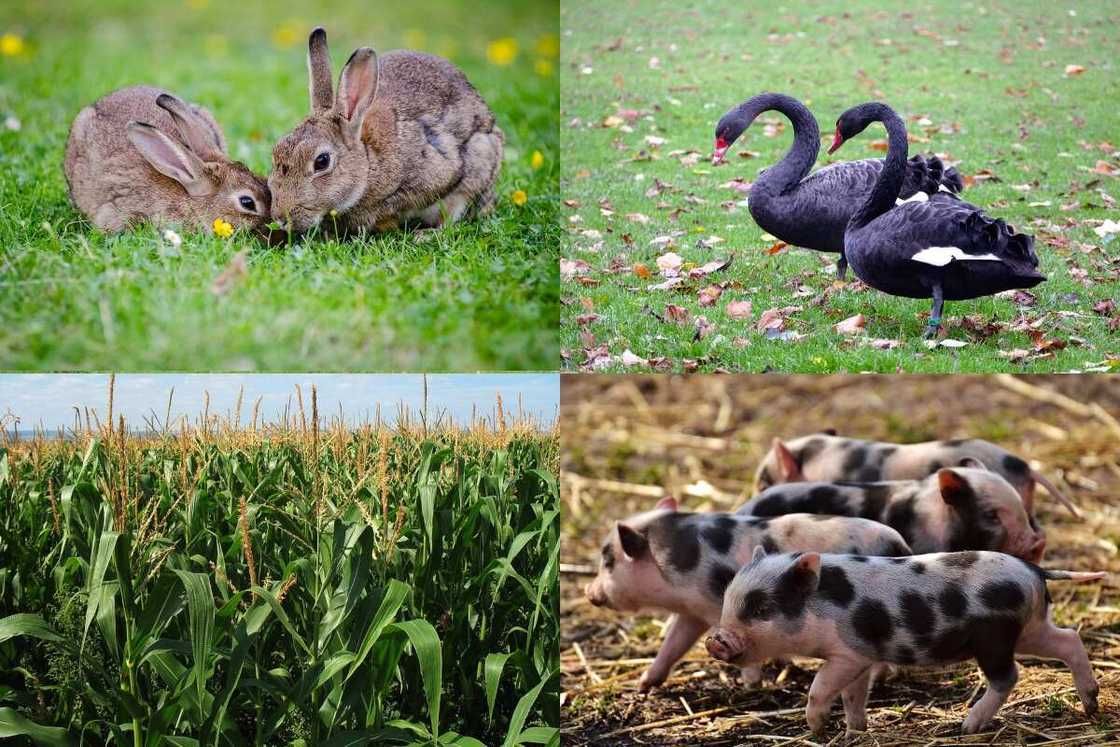
Source: UGC
What are the types of integrated farming?
Examples of integrated farming are:
- Fish mixed with pig farming.
- Fish mixed with duck farming.
- Fish mixed with chicken farming.
- Fish mixed with cattle farming.
- Fish mixed with rabbit farming.
- Keeping poultry and growing maize, sorghum, or millet.
- Intercropping groundnuts with beans, peas, and maize.
- Intergrowing bananas, squash, ginger, or eggplant with coconut trees.
- Making biogas or manure from livestock for domestic or farm use.
Knowing the advantages and disadvantages of integrated farming system helps you plan efficiently before venturing into it. It is a highly profitable sector if one knows what they are doing.
READ ALSO: How many plots make an acre in Nigeria? Land sizes explained
Legit.ng also shared a well-explained article about land sizes and measurements in Nigeria. Discover how many plots make an acre in this country.
Find out land measurement methods the country uses because a plot in Lagos State is smaller than one in the outskirts of Lagos or other parts of Nigeria.
Source: Legit.ng

Peris Walubengo (Lifestyle writer) Peris Walubengo has vast experience in search engine optimization through digital content generation, research, editing, and proofreading. She joined Legit.ng in April 2022 and completed the AFP course on Digital Investigation Techniques. You can email her at perisrodah254@gmail.com.

Adrianna Simwa (Lifestyle writer) Adrianna Simwa is a content writer at Legit.ng where she has worked since mid-2022. She has written for many periodicals on a variety of subjects, including news, celebrities, and lifestyle, for more than three years. She has worked for The Hoth, The Standard Group and Triple P Media. Adrianna graduated from Nairobi University with a Bachelor of Fine Arts (BFA) in 2020. In 2023, Simwa finished the AFP course on Digital Investigation Techniques. You can reach her through her email: adriannasimwa@gmail.com



